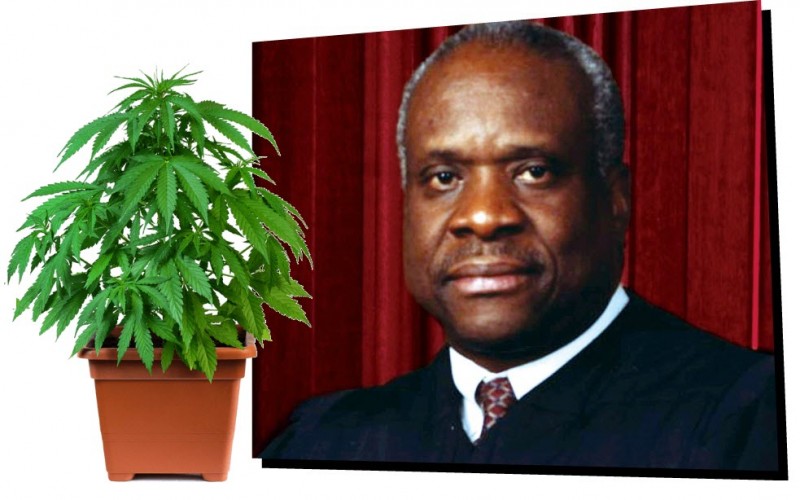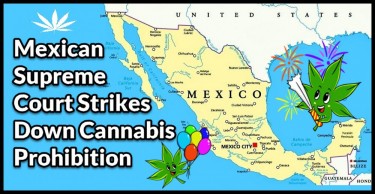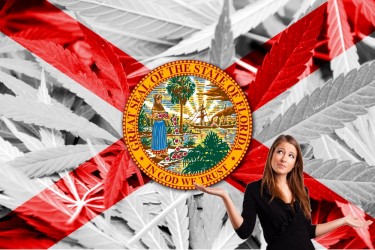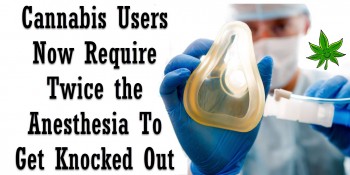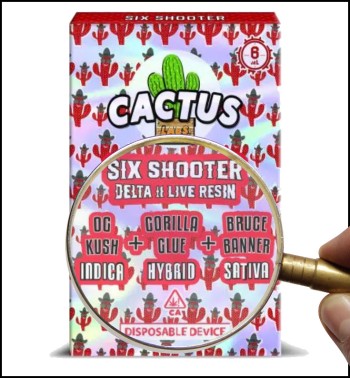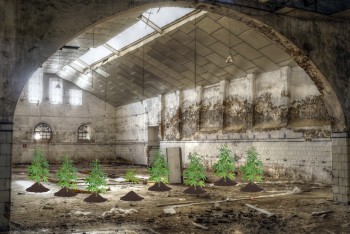Did The Supreme Court Just Say They Would Federally Legalize Marijuana If Someone Brought a Case to Them?
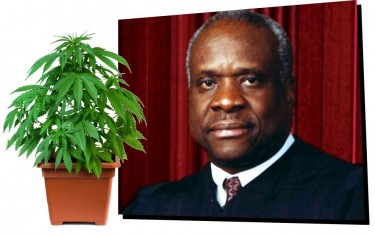
Clarence Thomas, a conservative Supreme Court Justice, may have just dropped the mother of all bombs on the Federal government about their “half in, half out” Federal marijuana policy. As NBC news reported, Thomas is not a fan of the Federal government’s marijuana policy and wrote:
"A prohibition on interstate use or cultivation of marijuana may no longer be necessary or proper to support the federal government's piecemeal approach. Federal policies of the past 16 years have greatly undermined its reasoning," he said. "The federal government's current approach is a half-in, half-out regime that simultaneously tolerates and forbids local use of marijuana.”
Judge Thomas wrote his after the court declined to hear the appeal of a Colorado medical marijuana dispensary that was denied federal tax breaks other businesses are allowed. That case was a challenge to the 280E IRS tax codes, not a challenge to Federal marijuana legalization, per say.
Justice Thomas said the Supreme Court's ruling in 2005 upholding federal laws making marijuana possession illegal may now be out of date.
Thomas also wrote, “"Under this rule, a business that is still in the red after it pays its workers and keeps the lights on might nonetheless owe substantial federal income tax. The federal government's ‘willingness to look the other way on marijuana is more episodic that coherent,’ Thomas said.
The Justice's announcement comes on the tailwinds of recent legalization progress by New York and New Jersey, and Democrats' push for comprehensive reform to the current drug code.
David Rabinovitz, noted marijuana scholar and consultant says, "What Thomas seems to be saying is that the inconsistencies at the federal level are so severe, their conduct may have undermined the law. There is a clear disconnect between what politicians say and what federal researchers find. Government research has repeatedly found that marijuana is not dangerous. By 1978, the FDA quietly established the Compassionate Investigational New Drug Program to supply U.S. Gov’t made joints to patients, notwithstanding the government was claiming marijuana had no accepted medical use, had a high potential for abuse, and lack of accepted safety for use under medical supervision. In 1988, DEA Administrative law judge Francis Young finds marijuana to be “one of the safest therapeutically active substances known to man” and founds its Schedule 1 classification was “unreasonable, arbitrary and capricious.” With state legalization, the courts may soon have to face numerous government inconsistencies and just as the government cannot change the laws of gravity, it seem J. Thomas is suggesting the unwinding of marijuana demonization has progressed so far, with the government’s permission, that the law may no longer be valid."
Consider these factors:
-
In 1925 the U.S. Army (like the British occupying forces in India in the 1890s) became concerned that U.S. soldiers were relaxing in the Panama Canal zone by smoking marijuana. After an exhaustive study, the Army found there was no evidence marijuana “has any appreciable deleterious influence on the individuals using it.” Reports on soldiers flipping out after smoking the drug “appear to have little basis in fact… There is no medical evidence it [marijuana] causes insanity.”
-
The British report was Commissioned in 1893, Completed 1894, required 8 volumes, and found that “the moderate use of hemp drugs is practically attended by no evil results at all.”
-
At the 1937 Marijuana Tax Act hearings, American Medical Association Legal Counsel Dr. William Woodward testified that cannabis is hardly the scourge (Federal Bureau of Narcotics chief Harry) Anslinger makes it out to be. Michigan Rep. John Dingell Sr. stated: “We know that it is a habit that is spreading, particularly among youngsters… The number of victims is increasing each year,” prompting Woodward to admonish him that “There is no evidence of that.” When Dingell suggested “The medical profession should be doing its utmost to aid in the suppression of this curse that is eating the very vitals of the nation,” Woodward responded with amazement: “They are?” When the House chamber voted to approve the MJ Tax Act 5 weeks later, someone asked “Did anyone consult the AMA and get their opinion?” Rep. Fred Vinson: “Yes, we have. A Dr. Wharton and the AMA are in complete agreement.”
-
By 1939, Dr. Walter Bromberg, the presiding Psychiatrist at Bellevue in NYC could not reconcile what he read in newspapers about marijuana against what he saw in the hospital. This led to a psychiatric study of marijuana in the Journal of the American Medical Association. Bromberg reviewed hospital records of 2,216 felons acquainted with marijuana and arrived at the conclusion that “marijuana lacks addictive qualities of opium and other drugs.”
-
New York City Mayor Fiorello La Guardia was approached by mothers concerned that marijuana cigarettes were being sold in schoolyards to young children. La Guardia approached the New York Academy of Medicine and over the next 5 years, the NYAM conducted the most comprehensive review of marijuana since Indian Hemp Drug Commission in 1894. They found that School yard peddlers were selling loose cigarettes, not joints, and in 1944 concluded that:
“No positive relation could be found between violent crime and the use of marijuana.”
“No cases of murder or sexual crimes due to marijuana were established.”
Subjects were administered the drug in a variety of settings
Results proved the opposite of Anslinger’s claims; marijuana made criminals mellow
The 1944 La Guardia Report findings included:
u Findings:
u Smoking marijuana does not lead to addiction
u Use was not widespread among children
u Marijuana does not lead to morphine, cocaine, or heroine use
u Does not cause juvenile delinquency
u Does not cause commission of crimes
u Anslinger was incensed and proclaimed that “Anyone carrying out marijuana research unapproved by the Federal Narcotics Bureau would be arrested and tried on federal charges,” whereupon the La Guardia Report sank quietly into oblivion
On May 19, 1969, the Supreme Court of the United States ruled the 1937 Marijuana Tax Act was unconstitutional. Freshly elected President Nixon responded with the Comprehensive Drug Abuse Prevention and Control Act of 1970, which includes Title II: Controlled Substances Act (CSA). Marijuana was placed on Schedule 1, alongside heroin and LSD:
Schedule I drugs, substances, or chemicals are defined as drugs with no currently accepted medical use, high potential for abuse, and lack of accepted safety for use under medical supervision
To put the final nail in the coffin, Nixon appointed former Pennsylvania Governor Raymond Shafer to lead a commission to confirm the dangerousness of the drug. The Shafer Commission started March 22, 1971, was concluded the following year after an exhaustive study by a staff of 73 full and part-time staff who held hearings across the country and participated in 50+ projects and studies. The 1,184 page report was met with similar fanfare as the Mueller Report in 20XX. The Shafer report debunked 40 years of federal claims. In 1972, 50% of public believed one could die from a marijuana overdose. The Shafer Commission could not find one instance.
o “The fact should be emphasized that the overwhelming majority of marijuana users do not progress to other drugs.”
o If any drug can be said to be a gateway, “it is tabaco, followed closely by alcohol.”
o “Marihuana is not an innocuous drug, (but its use) does not constitute a major threat to public health.”
o Intermittent use of pot “carries minimal risk to the public health.”
o The commission concluded that marijuana shouldn’t merely be rescheduled; it should be decriminalized. Prohibition wasn’t working.
The Commission recommended (quote below on image). Nixon disavowed the report and Shafer never received his appointment to the Federal Bench.
1971: UCLA ophthalmologist carries out marijuana research on pupil dilation
Goal: Make it easier for cops to spot pot smokers
Findings: Pot use decreases eye pressure – a primary symptom of glaucoma
Sues feds for right to use marijuana to treat glaucoma
1978: Randall wins!
FDA establishes Compassionate Investigational New Drug Program to supply U.S. Gov’t made joints
In 1964, two researchers discovered that Rastafarians had unusually low glaucoma rates and local fishermen were washing their eyes with cannabis extract in the belief that it would improve their sight.
What Does It Mean?
The good news is that Clarence Thomas is a conservative judge on the Supreme Court, so his opinion on marijuana matters, and since he is absconding the Federal government's “legal but not legal” path for cannabis, it is good news for pro-cannabis advocates. Thomas is actually considered by many as the MOST conservative judge on the Supreme Court, so if he is telling the Federal government they are "half baked" with this approach, less conservation judges most likely feel the same.
Does that mean the Supreme Court just made weed legal or is about to? No, the courts interpret the law, they do not make them. So, a case challenging the Federal classification of the cannabis plant as a Schedule 1 drug would have to be heard by the Supreme Court. That is easy, right? Not so fast, many people have tried to sue the government over the classification of cannabis, and while judges have said nice things about these people, and said they are on to something, the Supreme Court has declined to hear such a case so far. The signal from the Supreme Court today is that if a case were to make to their court, at least one conservative judge, Clarence Thomas, appears to be signaling the government’s policy is not “really coherent, and can’t be half in and half out” with its federal law and current state laws changing.
THE SUPREME COURT ON WEED, READ MORE...
THE MEXICAN SUPREME COURT SHOOTS DOWN MARJIUANA PROHIBITION!
OR..
FLORIDA SUPREME COURT SHOOTS DOWN MARIJUANA LEGALIZATION, WHAT?

